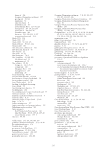Lake Eyre Basin Rivers 148 (Murray–Darling Basin Authority 2012). At the very least, we hoped that increasing environmental flow water to the Macquarie Marshes would halt the long-term environmental and economic decline. The Murray–Darling Basin Plan established the Commonwealth Environmental Water Holder, with a role to purchase water and manage environmental water in the Macquarie River. In addition, the New South Wales Government also purchased environmental water and managed environmental flows. There is now more than 300 000 ML of environmental flow held in environmental licences for the Macquarie River when all the upstream dams are full. In 2016, the Murray–Darling Basin Authority reviewed the Basin Plan target of returning 390 GL/year of water from irrigation and other efficiency measures to the environment (Murray–Darling Basin Authority 2016b), concluding that this measure should be reduced by 70 GL. For the Macquarie River, there was an absurd conclusion that the system had too much environmental water (12 000 ML/year, (Murray–Darling Basin Authority 2016a), raising the prospect that environmental water bought by governments would be sold back to the irrigation industry. This decision flies in the face of recent rapidly accumulating peer-reviewed science about the state of the Marshes (Thomas et al. 2011 Bino et al. 2015 Catelotti et al. 2015), which received no reference in the Northern Basin Review (Murray–Darling Basin Authority 2016b). Just as problematic, this assessment focused primarily on socio-economic assessments of the irrigation industry, largely ignoring the impacts of reduced flooding on floodplain graziers (Murray–Darling Basin Authority 2016c). Our community Hard-won gains in improved environmental outcomes did not happen by accident. Our dedicated local community, individuals in government, non-government organisations and scientists have forced major policy and management changes. In particular, it became clear that the Macquarie Marshes Nature Reserve was affected by the changes to flooding regimes and so we landholders of the Macquarie Marshes worked closely with the New South Wales National Parks and Wildlife Service to fight for the Marshes. I have been involved in the water debate all my life. The Macquarie Marshes Environmental Landholders Association has provided a strong voice, particularly through the Mclelland, Fisher and Jones families and other community members. We are entering a new phase, with generational change, but new challenges still constantly appear. We are fortunate because our elders are lending their experience to our energetic youth. There is always another fight for our Macquarie Marshes, forced by another potential, subtle change in water policy. Decisions continue to be largely made upstream, with major ramifications for our Marshes and livelihoods. This is a never-ending struggle in the Macquarie River. In 2017 there will be a review of the water sharing plan, with the Commonwealth long-term environmental watering plan under development both are critical for the sustainability of the Macquarie Marshes. Conclusion We are the custodians of the wonderful Macquarie Marshes, which not only sustain us and our livelihoods but also have an incredible biodiversity. We have learnt much about
Downloaded from CSIRO with access from at 216.73.216.191 on Nov 29, 2025, 9:19 AM. (c) CSIRO Publishing

















































































































































































































































































